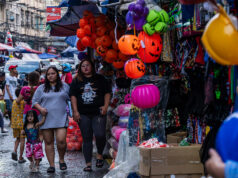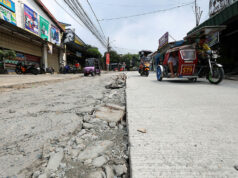Cathay Dragon looks to increase HK-Davao flights
DAVAO CITY — Cathay Dragon, which currently serves the Davao-Hong Kong (HK) route four times a week, is looking at an increase to daily flights, noting the good load factor since its launch in October 2018.
Robin Bradshaw, country manager of the airline’s parent company Cathay Pacific, said the load factor can go as high as 85%.
“My big ambition is to get that (number of flights) to daily as quickly as possible,” said Mr. Bradshaw at the Davao Investment Conference (ICon) last week.
Flights, using an Airbus 320, is already being planned for an increase to five times a week as the Christmas season approaches, he added.
Mr. Bradshaw noted that Cathay Dragon’s Hong Kong-Davao performance “does not happen normally as it will take you two to three years (to achieve that load factor with a new route).”
He said there is potential for an even bigger passenger market, particularly tourists, but Davao Region has to become more competitive as a destination through better infrastructure and facilities.
He said the government and the private sector must work together not only to enhance facilities, but also to promote the region as a tourist destination.
“We have a job to do about teaching, about educating (travelers),” he said.
Aside from those traveling from and to Hong Kong, Mr. Bradshaw said the route has also been serving passengers connecting to and from North America, Australia, Japan, and even Europe.
“We encourage our Japanese businessmen and tourists to come to Davao through Hong Kong,” he added, as he made the call to about 50 Japanese investors who were attending the conference.
JAPAN FLIGHTS
Meanwhile, Japanese investors in the city have joined local business groups in pushing for airline companies to service the Davao-Tokyo route.
Japanese Chamber of Commerce-Mindanao Vice-President Takeyoshi Sumikawa said they have written to Philippine Airlines suggesting to tap the Narita airport because it is less congested than Haneda airport.
“We want to have that (as) first priority for Philippine Airlines,” said Mr. Sumikawa.
He noted that some Japanese agencies sent representatives to the Davao ICon, such as the Japan National Tourist Organization which opened an office in Makati City last week.
Ichido Miyake, the chamber’s president, said more promotional activities among Japanese tourists and investors are needed to counter such impressions as a “dangerous” Mindanao and “rural” Davao.
“Most of the Japanese delegates… thought that Mindanao and Davao (are) still dangerous,” said Mr. Miyake.
He added that among the feedback they got from the Japanese participants was that many “were surprised to see the developments in the city” as they thought it was still a largely rural area. — Carmelito Q. Francisco



